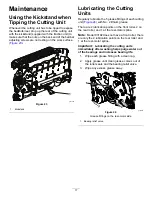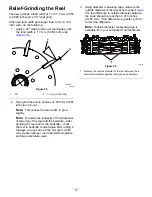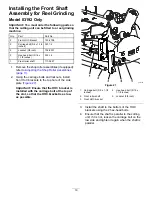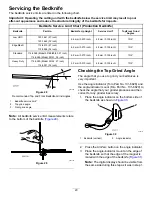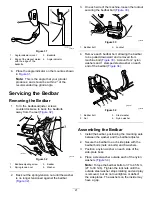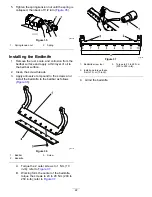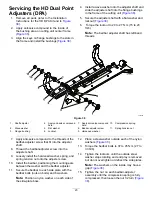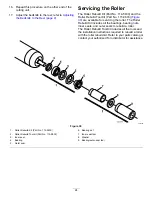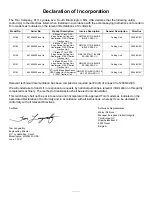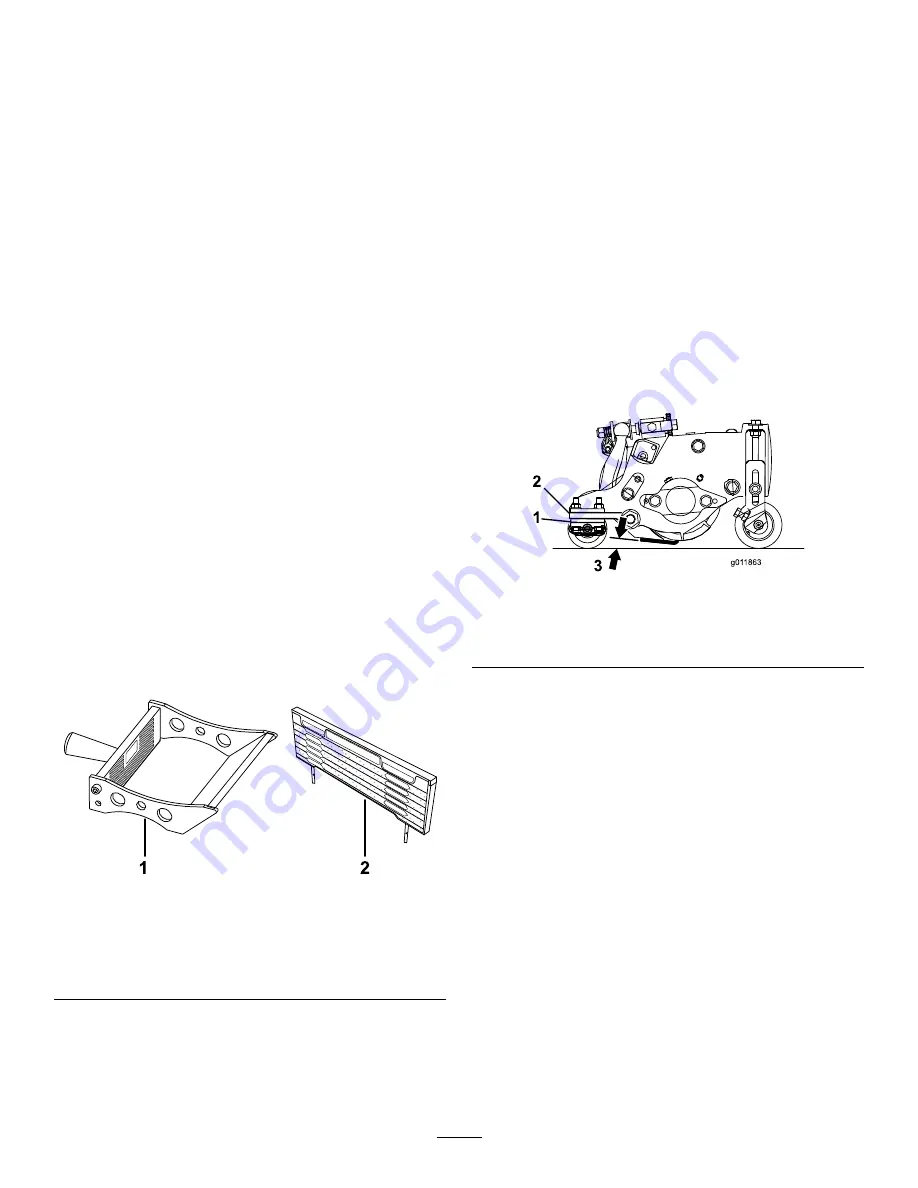
Height-of-Cut Chart Terms
Height-of-Cut Setting (HOC)
This corresponds to the desired height of cut.
Bench-Set Height of Cut
The bench-set height of cut is the height at which
the top edge of the bedknife is set above a flat level
surface that contacts the bottom of both the front roller
and the rear roller.
Effective Height of Cut
This is the actual height that the grass has been cut.
For a given bench-set height of cut, the actual height
of cut varies depending on the type of grass, time
of year, turf, and soil conditions. The cutting-unit
setup (aggressiveness of cut, rollers, bedknives,
attachments installed, turf-compensation settings,
etc.) also affect the effective height of cut.
Check the effective height of cut using Toro Turf
Evaluators regularly to determine the desired
bench-set height of cut.
Recommended Toro Turf Evaluators for measuring
Toro Reelmaster Effective HOC (
•
Turf Evaluator, Model 04399: for bench-set HOC
from 0.25 to 1.00 inch (6 to 25 mm).
•
High Height-of-Cut Turf Evaluator, Model
136-3635: for bench-set HOC from 1.00 to 2.00
inches (25 to 51 mm).
g342500
Figure 21
1.
Turf Evaluator — effective HOC range: 0.00 to 1.60 inches
(0 to 41 mm)
2.
High HOC Turf Evaluator — effective HOC range: 0.75 to
6.00 inches (19 to 152 mm)
Aggressiveness of Cut
The aggressiveness of cut has a significant impact on
the performance of the cutting unit. Aggressiveness
of cut refers to the angle of the bedknife relative to the
ground (
).
The best cutting-unit setup depends on your turf
conditions and desired results. Experience with the
cutting unit on your turf will determine the best setting
to use. You can adjust the aggressiveness of cut
throughout the cutting season to allow for various turf
conditions.
In general, less to normal aggressive settings
are more appropriate for warm-season grasses
(Bermuda, paspalum, zoysia) while cool-season
grasses (bent, bluegrass, rye) may require normal to
more aggressive setups. More aggressive setups cut
more grass off by allowing the spinning reel to pull
more grass up into the bedknife.
g011863
Figure 22
1.
Rear spacers
3.
Aggressiveness of cut
2.
Side-plate mounting flange
Rear Spacers
The number of rear spacers determines the
aggressiveness of cut for the cutting unit. For a given
height of cut, adding spacers below the side-plate
mounting flange increases the aggressiveness of the
cutting unit. All cutting units on a given machine must
be set to the same aggressiveness of cut (number
of rear spacers, Part No. 119-0626), otherwise the
after-cut appearance could be negatively affected
(
).
16
















